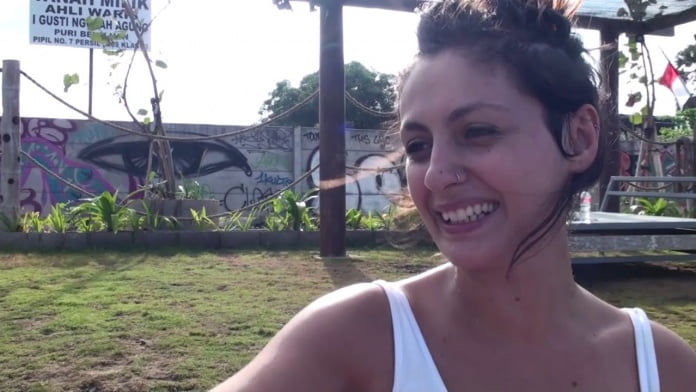“Anchoring” is one of the fundamental tools of NLP which can be powerful in helping you to have more confidence.
It’s a simple way to change an unwanted feeling to a resourceful feeling in a matter of moments. When you create an NLP anchor you set up a stimulus-response pattern so that you can feel the way you want to, when you need to.
In NLP, “anchoring” refers to the process of associating an internal response with some external or internal trigger so that the response may be quickly, and sometimes covertly, re-accessed. Anchoring is a process that on the surface is similar to the “conditioning” technique used by Pavlov to create a link between the hearing of a bell and salivation in dogs. By associating the sound of a bell with the act of giving food to his dogs, Pavlov found he could eventually just ring the bell and the dogs would start salivating, even though no food was given. In the behaviorist’s stimulus-response conditioning formula, however, the stimulus is always an environmental cue and the response is always a specific behavioral action. The association is considered reflexive and not a matter of choice.
In NLP this type of associative conditioning includes links between other aspects of experience than purely environment cues and behavioral responses. A remembered picture may become an anchor for a particular internal feeling, for instance. A voice tone may become an anchor for a state of excitement or confidence. A person may consciously choose to establish and re-trigger these associations for himself. Rather than being a mindless knee-jerk reflex, an anchor becomes a tool for self-empowerment. Anchoring can be a very useful tool for helping to establish and reactivate the mental processes associated with creativity, learning, concentration, and other important resources.
How to use anchoring
In this example, I need you to remember a time when you were very happy, such as when you won a competition, had your first kiss, or had some really good news. It can be anything you like, as long as it was definitely a very happy moment.
In your head, tell me the story of what happened leading up to that happy moment. Be vivid, and describe how it felt. Picture that moment in your head, and recall the feeling.
I want you to hold your left index and middle fingers in your right hand, and gently give your fingers two quick squeezes. As you do the second squeeze, make the picture of the happy moment larger, bringing it closer to you, and imagine the happy feeling multiply in strength.
Describe again how you are feeling. Describe what you were thinking at the time. As you do, squeeze your fingers twice. On that second finger squeeze, the happy feeling doubles, again. The clearer you can imagine the feeling, the better this technique will work. Repeat these steps until you have described then doubled the intensity of the feeling five times in a row.
That’s the first part – laying the anchor. Later we can recall this anchor by using the same double-squeeze to recall a sense of happiness.
What is happening in our brains when we do this?
You are psychologically associating the neural signal of “two squeezes on my left fingers” with “happy”. Therefore it stands to reason that the more times you lay the anchor (as above) and the more clarity you have in the feeling, the better this technique will work. We can combine this with plenty of other NLP techniques to make that feeling more clear and vivid, but for now, we’ll make do. This is known as conditioning.
The famous experiment by Russian scientist Ivan Pavlov describes him ringing a bell every time his dogs were fed. The dogs psychologically associated the experience of eating with the sound of the bell. Later on, the dogs would start salivating at the mere ringing of the bell. This is similar to what we are doing when we are using the NLP technique of anchoring.
Examples of when to use NLP anchoring
Anchoring is often used in seduction (soon to be covered in-depth on NLP-secrets.com!) The most obvious example is when one party asks the other about a happy memory. When the seductive is “in the memory” ie they are smiling or laughing, the seductor uses either a distinct gesture or a light touch on the arm as an anchor. Whatever the anchor is, it mustn’t be too noticeable. Otherwise, it will appear unusual and the effect will fail.
Later on, the seductor can use that anchor to make the seductive feel the same kind of happiness as before when the seductor is getting closer. The seductive will recall a happy feeling, but will now associate that happy feeling with being close to the seductor. It’s a bit of a swindle, but it won’t work if there is no attraction in the first place.
Personally, I use anchoring as a martial arts coach to improve my students’ feeling of reward when they do well. After I spar (fight) with one of my students, we shake hands, every time. However, if my student puts up a good fight, I will add a light punch on the shoulder. Sparring can be intense and is often accompanied by adrenaline, and the associated endorphins (pleasurable feeling).
By using the punch on the arms anchor repeatedly, my students begin to associate it with the pleasure of post-adrenaline endorphins. Using the same NLP idea behind Pavlov’s dogs, I can eventually induce those same endorphins, just by doing that light punch. This is very useful when students are nervous before a tournament fight or grading.
CLICK HERE For More Course Inclusions and Our June Main Event![]()



















































